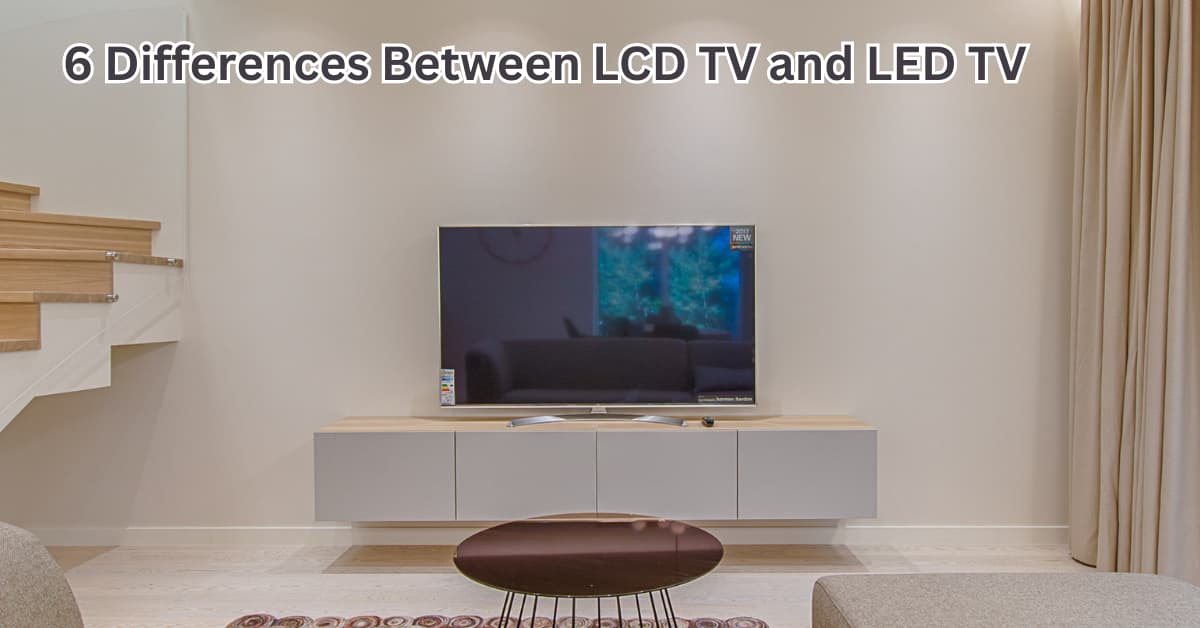
What is an LCD TV?
A form of television that employs liquid crystal technology to create images is an LCD TV, also referred to as a liquid crystal display television. The liquid crystal display panel is illuminated by a backlight, which in LCD technology is often an LED (light-emitting diode) array or fluorescent bulb.
Compared to previous CRT (cathode-ray tube) televisions, LCD TVs are renowned for having a thin profile and being relatively lightweight. They are able to provide clear, high-quality photographs with good colour fidelity. As a standard display technology for televisions, computer monitors, and other electronic devices, LCD TVs gained popularity in the early 2000s.
What are the Features of LCD TV?
A variety of features that improve the viewing experience are included with LCD TVs. The following are some common features of LCD TVs:
- High-Definition (HD) Resolution
- Wide Viewing Angles
- Smart TV Capabilities
- Energy Efficiency
- HDMI and Other Connectivity Options
Types of LCD TVs
There are different types of LCD TVs:
- Standard LCD TV
- LED-Backlit LCD TV
- Edge-Lit LED TV
- Direct-Lit LED TV
- Full-Array LED TV
6 Differences Between LCD TV and LED TV
Differences between LCD TV and LED TV are:
- Backlighting Technology: The backlight source for LCD TVs can be either LED arrays or fluorescent bulbs. The backlighting of LED TVs, on the other hand, is always provided by LED (Light-Emitting Diode) arrays. The key difference between them is this fundamental variation in backlighting technology.
- Contrasting and Black Tones: Compared to conventional LCD TVs, LED TVs often have higher contrast ratios and deeper black levels. Higher local dimming and higher black levels are made possible by LED backlighting since it allows for more exact control over individual backlight zones. As a result, the total picture quality is improved and the viewing experience is made more immersive.
- The Efficiency of Energy: In general, LED TVs use less energy than conventional LCD TVs. Less power is used with LED backlighting, which results in lower electricity costs and a less environmental impact. Since LED TVs are made to be more energy-efficient, they will ultimately cost less money.
- Design with a Slimmer Profile: LED TVs are renowned for their sleek, low-profile looks. Compared to conventional LCD TVs that use fluorescent lamps, TVs with LED backlighting can be made thinner and lighter. LED TVs look good because to their sleek design, which also gives you more placement options.
- Cost: Compared to ordinary LCD TVs, LED TVs are often more expensive. The price difference is a result of better picture quality and cutting-edge LED backlighting technology. It’s important to remember, too, that as the use of LED technology has increased, so have the prices of LED TVs.
- Consistency and Viewable Degrees: Compared to traditional LCD TVs, LED TVs often offer superior backlight uniformity and wider viewing angles. The possibility of clouding or uneven areas on the screen is decreased with the aid of LED backlighting. Additionally, as LED TVs typically have greater viewing angles, viewers may experience consistent picture quality from different locations throughout the room.
How to Turn Your LED / LCD TV Into a Smart TV?
If your LED or LCD TV lacks integrated smart features, you can still make it a smart TV by connecting it to external hardware or using streaming services. Here are some ideas for smartening up your LED/LCD TV:
- Connect a streaming device to the HDMI port on your TV.
- Boxes for making conventional TVs into smart TVs are known as “smart TVs.”
- Game Consoles: If you already own a gaming console like the PlayStation 4 or Xbox One, you may use it as a media center because many of them come with built-in streaming apps.
Before You Buy an LCD TV
There are a number of things to think about before making an LCD TV purchase to make sure you choose wisely. Following are some key considerations:
- Size
- Resolution
- Display
- Smart Features
- Quality
- Price



